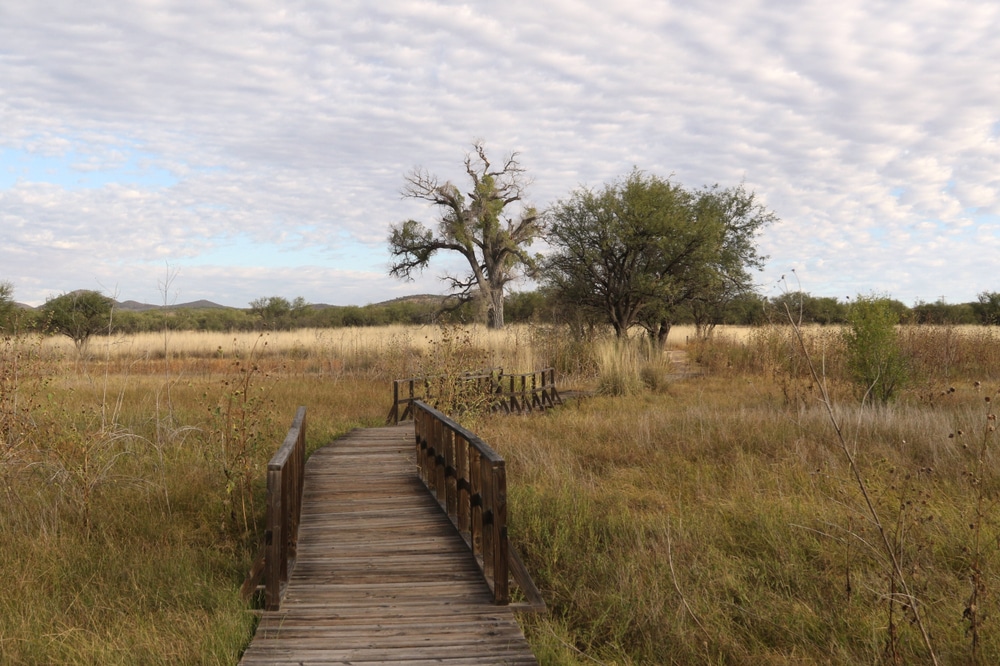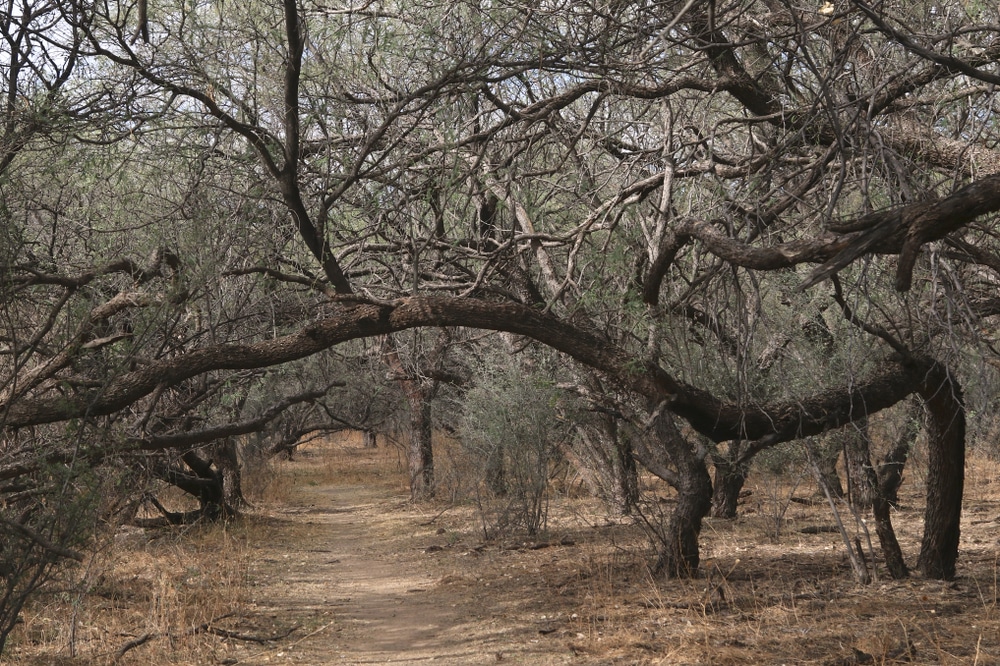Nestled in the southern reaches of Arizona, the Buenos Aires National Wildlife Refuge (BANWR) represents a remarkable ecological treasure that often goes unnoticed among the state’s more famous desert landscapes. Spanning approximately 118,000 acres of sweeping grasslands, riparian areas, and mesquite bosques, this refuge stands as a testament to Arizona’s surprisingly diverse ecosystems. Established in 1985 with the primary goal of protecting and restoring the once-abundant native grasslands and the endangered masked bobwhite quail, Buenos Aires has evolved into a multifaceted conservation success story.
Unlike the iconic saguaro-studded deserts or dramatic red rock formations that define much of Arizona’s public lands, Buenos Aires showcases the subtle beauty of the Sonoran semi-desert grasslands. These rolling prairies once dominated southern Arizona but have diminished significantly due to cattle ranching, invasive species, and altered fire regimes. Today, the refuge serves as both a sanctuary for grassland-dependent wildlife and a living laboratory for ecological restoration efforts.

The Buenos Aires National Wildlife Refuge is a breathtaking expanse of grasslands and riparian corridors located in southern Arizona, just north of the U.S.-Mexico border. Spanning over 117,464 acres, the refuge was established in 1985 to restore and protect the endangered masked bobwhite quail and its critical habitat. This diverse landscape, characterized by rolling grasslands, mesquite trees, and desert mountains, supports an incredible variety of wildlife, making it a haven for birdwatchers, hikers, and nature lovers.
With its wide-open vistas, unique ecosystems, and opportunities for solitude, the refuge offers visitors a chance to experience one of the Southwest’s most beautiful and ecologically significant areas.

The refuge features a variety of nature trails and open grasslands to explore. One of the most popular areas is the Arivaca Cienega Trail, an easy 1-mile loop through a lush wetland that is home to diverse birdlife and native vegetation. The nearby Arivaca Creek Trail is a 2-mile round-trip hike that follows a riparian corridor, offering shade, scenic beauty, and excellent opportunities for wildlife viewing.
For those seeking more solitude, the refuge’s vast open spaces invite off-trail exploration, particularly in the grassy plains and foothills of the Baboquivari Mountains. Hikers should be prepared with plenty of water, sturdy footwear, and navigation tools.

The nearby town of Arivaca, located just east of the refuge, is a charming community that serves as a gateway to several of Buenos Aires’ highlights. The Arivaca Cienega Trail and Arivaca Creek Trail are both located in this area, and the town offers small shops and cafes where visitors can stop before or after exploring the refuge.

The refuge offers dispersed camping in designated areas for those looking to immerse themselves in the peaceful beauty of the grasslands. There are no campgrounds or facilities, but camping is free and allowed in specific sites marked by signs. Visitors must follow Leave No Trace principles and be self-sufficient, as there are no water sources, restrooms, or other amenities.

The refuge permits hunting in designated areas during specific seasons, in accordance with Arizona state regulations. Popular game animals include white-tailed deer, mule deer, and dove. Hunters must obtain the appropriate permits and follow all refuge rules to ensure safety and conservation.

The Buenos Aires National Wildlife Refuge is renowned for its incredible biodiversity. Its primary mission is to protect the endangered masked bobwhite quail, a rare subspecies of quail that depends on the refuge’s grasslands for survival. Efforts to reintroduce this bird to its native habitat have been ongoing since the refuge’s establishment.
Beyond the masked bobwhite quail, the refuge is home to over 300 species of birds, including hawks, owls, and hummingbirds, making it a birdwatcher’s paradise. In addition to birds, visitors may encounter pronghorn antelope, mule deer, javelinas, coyotes, and even elusive predators like mountain lions and bobcats. Reptiles such as desert tortoises, horned lizards, and a variety of snakes are also common.
The refuge’s diverse habitats—grasslands, wetlands, and riparian areas—offer prime opportunities to observe wildlife year-round, especially in the early morning or late afternoon.
With its remote location and minimal light pollution, Buenos Aires National Wildlife Refuge is an excellent site for stargazing. On clear nights, visitors can enjoy spectacular views of the Milky Way, constellations, and meteor showers. Bring a telescope or simply enjoy the beauty of the night sky from one of the refuge’s dispersed camping areas.

The refuge’s network of dirt roads allows visitors to explore its vast grasslands and take in panoramic views of the surrounding desert and mountains. The Sasabe Road (AZ-286) runs along the refuge’s western edge and provides access to scenic vistas and parking areas. Many of the roads are suitable for standard vehicles, but some may require high-clearance or four-wheel-drive vehicles, particularly after rain.

| Category | Details |
|---|---|
| Location | Southern Arizona, near the U.S.-Mexico border, in Pima County |
| Established | 1985 |
| Managed by | U.S. Fish and Wildlife Service |
| Area | Approximately 117,464 acres |
| Primary Features | Extensive grasslands, riparian areas, and mountain foothills, home to diverse wildlife |
| Nearest Cities | Sasabe, Arizona, and Arivaca, Arizona |
| Activities | Wildlife viewing, birdwatching, hiking, photography, camping, and hunting (in designated areas) |
| Topography | Rolling prairie grasslands, mesquite-lined washes, wetland areas, and rugged mountain foothills |
| Wildlife | Over 325 bird species (e.g., masked bobwhite quail, vermilion flycatchers), pronghorn, mule deer, javelinas, coyotes, and black bears |
| Vegetation | Native grasses, mesquite trees, cottonwoods, and desert wildflowers |
| Climate | Semi-arid with hot summers, mild winters, and seasonal monsoon rains |
| Key Features | – Masked Bobwhite Recovery Area: Critical habitat for the endangered masked bobwhite quail<br> – Arivaca Cienega: A lush wetland area with year-round water<br> – Brown Canyon: A scenic canyon in the Baboquivari Mountains |
| Camping | Free dispersed camping allowed in designated areas; no hookups or developed facilities |
| Significance | Protects one of the few remaining native grassland ecosystems in the Southwest and is critical for endangered species conservation |
| Visitor Facilities | Arivaca Visitor Center (provides maps and information) |
| Access | Accessible via State Route 286 or via Arivaca, Arizona; some roads require high-clearance vehicles |
Located just 60 miles southwest of Tucson and directly bordering Mexico, Buenos Aires also plays a significant role in cross-border conservation initiatives. The refuge forms part of a crucial wildlife corridor that connects habitats in the United States and Mexico, allowing for the natural movement of species across political boundaries. This international dimension adds layers of complexity and importance to the refuge’s conservation mission.
For visitors seeking a less crowded alternative to Arizona’s popular national parks, Buenos Aires offers an authentic wilderness experience where the vast open spaces, dramatic monsoon skies, and abundant wildlife create a sense of connection to the Southwest’s natural heritage. Whether hiking across expansive grasslands, birdwatching in wetland areas, or simply enjoying the tranquility of this remote landscape, visitors to Buenos Aires National Wildlife Refuge discover a side of Arizona that broadens their understanding of the state’s ecological diversity.
The crown jewel of Buenos Aires National Wildlife Refuge is undoubtedly its expansive semi-desert grasslands, a habitat type that has become increasingly rare throughout the Southwest. These undulating plains of golden grasses represent one of the largest remaining intact grassland ecosystems in the region. Dominated by native species such as blue grama, sideoats grama, and various muhly grasses, this landscape transforms dramatically with the seasons—from the lush green explosion following summer monsoon rains to the golden waves that characterize the winter months.
The preservation of these grasslands stands as a conservation priority not only for their inherent ecological value but also for the numerous species that depend on them. The refuge’s commitment to grassland restoration includes prescribed burning programs, invasive species removal, and native grass reseeding efforts. These management practices mimic the natural fire cycles that historically maintained this ecosystem, preventing the encroachment of woody species like mesquite that can transform grasslands into shrublands.
Cutting through the northern section of the refuge, Arivaca Creek provides vital riparian habitat in an otherwise water-limited environment. The creek and its associated cienegas (desert wetlands) create an oasis effect, drawing a remarkable diversity of wildlife. Cottonwoods and willows line portions of the creek, offering crucial shade and habitat structure for numerous bird species.
The Arivaca Cienega, accessible via a developed trail and boardwalk system, showcases the importance of wetland habitat in the desert Southwest. These marshy areas support cattails, bulrushes, and other water-loving plants that in turn provide food and shelter for migratory birds, amphibians, and aquatic invertebrates. The cienega boardwalk offers visitors one of the refuge’s premier wildlife viewing opportunities, particularly for birders seeking waterbirds and riparian specialists.
While the refuge itself consists primarily of grasslands and lower elevation habitats, its proximity to the Baboquivari Mountains to the west and the Patagonia Mountains to the east connects it to the broader “Sky Island” ecosystem that characterizes much of southeastern Arizona. These isolated mountain ranges rise dramatically from the surrounding lowlands, creating ecological islands with distinct plant and animal communities.
The influence of these nearby sky islands can be seen in the wildlife that moves between these habitats and the refuge. Mountain lions, black bears, and coatis occasionally venture down from higher elevations, while the grasslands serve as important foraging grounds for raptors that nest in the mountains. This ecological connectivity highlights the importance of Buenos Aires as part of a larger landscape mosaic in southern Arizona.
The establishment of Buenos Aires National Wildlife Refuge is inextricably linked to the masked bobwhite quail (Colinus virginianus ridgwayi), a critically endangered subspecies of the northern bobwhite. Once common throughout the grasslands of southern Arizona and northern Sonora, Mexico, this distinctive quail with its rusty-red breast and black mask (in males) had nearly vanished from the United States by the mid-20th century due to habitat loss and degradation.
The refuge was specifically created to serve as a reintroduction site for this imperiled bird. Since the 1980s, biologists have worked diligently on captive breeding and release programs, habitat restoration, and population monitoring. Though challenges remain, the refuge continues to play a crucial role in recovery efforts for this flagship species. Visitors should understand that while spotting a masked bobwhite remains a rare occurrence, their exploration of the refuge contributes to the conservation of this iconic bird.
Beyond its signature quail species, Buenos Aires boasts an impressive avian diversity that makes it a premier destination for birdwatchers. More than 325 bird species have been documented within the refuge boundaries, a testament to both the habitat diversity and the refuge’s location along important migratory routes.
The grasslands provide essential habitat for specialized species such as Botteri’s sparrow, Cassin’s sparrow, grasshopper sparrow, and eastern meadowlark. During summer months, visitors might witness the spectacular aerial displays of male sparrows as they establish territories and attract mates.
The riparian areas and wetlands host an entirely different bird community, including common yellowthroats, vermilion flycatchers, and various herons and egrets. During migration seasons, the refuge sees influxes of warblers, flycatchers, and other Neotropical migrants.
Raptors are particularly well-represented, with Swainson’s hawks, northern harriers, and white-tailed kites hunting over the grasslands. Lucky visitors might spot the endangered aplomado falcon, which has been the focus of reintroduction efforts in the region.
The refuge’s diverse habitats support an equally diverse mammalian community. Mule deer and white-tailed deer are commonly seen, especially near dawn and dusk. Jackrabbits and desert cottontails abound in the grasslands, while the more secretive javelina (collared peccary) frequents the mesquite bosques and washes.
Predators include bobcats, coyotes, and the occasional mountain lion, though these are typically more elusive. Smaller mammals such as pocket mice, kangaroo rats, and ground squirrels play crucial roles in the grassland ecosystem as both seed dispersers and prey species.
The reptile community features western diamondback rattlesnakes, gopher snakes, desert grassland whiptail lizards, and the striking regal horned lizard. During the summer monsoon season, the temporary pools and flowing creeks come alive with spadefoot toads, leopard frogs, and other amphibians that emerge to breed during these brief windows of water abundance.
The refuge’s location along the international border means it occasionally hosts species more typically associated with Mexico. Visitors have documented rare sightings of jaguars, ocelots, and Mexican wolves—though encounters with these endangered mammals remain extremely rare. The refuge participates in monitoring efforts for these transboundary species, recognizing their importance to the broader regional ecosystem.
Buenos Aires offers several developed trails that showcase the refuge’s diverse habitats and provide excellent wildlife viewing opportunities:
Arivaca Cienega Trail: This 1.25-mile loop includes a wheelchair-accessible boardwalk through wetland areas, offering some of the best birdwatching on the refuge. Interpretive signs explain the ecological importance of desert wetlands.
Grasslands Trail: A moderate 2.5-mile loop through representative grassland habitat, providing visitors with an immersive experience in the ecosystem that defines the refuge. Interpretive panels highlight grassland ecology and restoration efforts.
Aguirre Lake Trail: A short 0.5-mile path to an artificial impoundment that attracts waterbirds and other wildlife, especially during migration seasons.
Mustang Trail: For more adventurous hikers, this 5-mile trail traverses diverse habitats from mesquite woodlands to open grasslands, offering panoramic views of the refuge and surrounding mountains.
Beyond these developed trails, the refuge permits cross-country hiking throughout most areas, allowing for self-guided exploration. Visitors should prepare for limited shade, carry adequate water, and be aware of their location, as the grasslands can appear deceptively similar across large areas.
Wildlife observation represents the premier recreational activity at Buenos Aires. The refuge provides several strategically located viewing platforms and blinds that enhance opportunities to observe and photograph wildlife:
For photographers, the refuge offers diverse subject matter beyond wildlife. The sweeping grassland vistas, dramatic monsoon skies, and seasonal wildflower displays provide ample opportunities for landscape photography. During summer months, the dramatic thunderstorms that build over the mountains create spectacular lighting conditions.
In alignment with the National Wildlife Refuge System’s commitment to traditional wildlife-dependent recreation, Buenos Aires permits regulated hunting for several game species. Hunting opportunities include:
All hunting activities require appropriate Arizona state licenses and must conform to both state regulations and refuge-specific rules. Hunters should check current regulations before planning their trip, as seasons and area closures may change annually based on wildlife management needs.
Unlike many national wildlife refuges, Buenos Aires permits primitive camping, making it an excellent destination for visitors seeking an immersive multi-day experience:
Designated Camping Areas: The refuge maintains several primitive designated camping areas with minimal facilities (typically just a cleared area and fire rings). These include sites near Arivaca Creek and in the central grasslands.
Dispersed Camping: Much of the refuge is open to dispersed camping, allowing visitors to select their own sites away from roads and developed areas. This option provides a true wilderness experience but requires proper preparation and adherence to Leave No Trace principles.
No reservations are required for camping, but visitors should register at the refuge headquarters upon arrival. Campers must bring all necessary supplies, including water, as potable water is only available at the headquarters facility.
The refuge experiences the typical Sonoran Desert climate pattern of hot summers and mild winters, but its higher elevation (approximately 3,500 feet) moderates temperatures compared to lower desert areas in Arizona:
Spring (March-May): Perhaps the most pleasant season, with moderate temperatures (65-85°F daytime), wildflower blooms following winter rains, and active wildlife. Spring migration brings many bird species through the refuge.
Summer (June-September): Characterized by hot daytime temperatures (85-95°F) and the dramatic monsoon season. Afternoon thunderstorms are common from July through September, transforming the landscape and triggering explosive plant growth. Morning hours offer the most comfortable conditions for summer visits.
Fall (October-November): Another excellent time to visit, with cooling temperatures, golden grasslands, and fall migration. Wildlife becomes more active during daylight hours as summer heat subsides.
Winter (December-February): Mild to cool days (55-65°F) with cold nights that occasionally drop below freezing. Winter brings concentrations of sparrows and raptors to the grasslands, making it an excellent season for birders. Snow is rare but possible at this elevation.
The summer monsoon season (typically July through September) brings dramatic changes to the refuge. Visitors during this period should be aware of:
Flash Flood Potential: Normally dry washes can transform into raging torrents within minutes. Never camp in washes or attempt to cross flowing water.
Road Conditions: Some refuge roads become impassable when wet. Check conditions at the visitor center before venturing onto unpaved roads.
Lightning Safety: Thunderstorms can develop rapidly. Seek shelter in vehicles (not under isolated trees) when lightning is present.
Despite these considerations, the monsoon season offers remarkable experiences—the grasslands transform from golden brown to vibrant green within days of the first significant rains, creating an explosion of biological activity. Witnessing this dramatic seasonal shift provides insights into the adaptive nature of desert grassland ecosystems.
Buenos Aires National Wildlife Refuge is accessible primarily via State Route 286, approximately 60 miles southwest of Tucson. The refuge headquarters and visitor center are located 25 miles south of Three Points (also known as Robles Junction) where SR 286 intersects with SR 86.
Secondary access points include:
Within the refuge, a network of dirt and gravel roads provides access to various habitats and recreational areas. Many of these roads are suitable for passenger vehicles in dry conditions, while others require high-clearance or four-wheel drive. Visitors should:
The refuge headquarters and visitor center serve as the primary orientation point for visitors, offering:
Beyond the headquarters, facilities are minimal, emphasizing the refuge’s wilderness character. Vault toilets are available at major trailheads and designated camping areas, but visitors should be prepared for self-sufficient exploration across most of the refuge.
The refuge strives to accommodate visitors of varying abilities:
Visitors with specific accessibility needs should contact the refuge office in advance for the most current information and recommendations.
The lands encompassing Buenos Aires National Wildlife Refuge have supported human communities for thousands of years. Archaeological evidence indicates that O’odham (Tohono O’odham and ancestors) peoples utilized these grasslands for hunting, gathering, and seasonal agriculture. The perennial water sources, particularly Arivaca Creek, served as important focal points for indigenous use.
Today, the refuge maintains consultation relationships with affiliated tribal nations, particularly the Tohono O’odham Nation whose reservation lands lie to the west. Cultural resources on the refuge are protected, and management decisions incorporate traditional ecological knowledge when appropriate.
The refuge’s more recent history reflects the region’s ranching heritage. Prior to its establishment as a wildlife refuge in 1985, the land consisted primarily of cattle ranches, including the large Buenos Aires Ranch from which the refuge derives its name.
Evidence of this ranching history remains visible across the landscape in the form of windmills, water tanks, corrals, and line shacks. While cattle grazing has been removed from most refuge lands to facilitate grassland restoration, these historical features provide glimpses into the area’s cultural heritage.
The transition from working ranchland to wildlife refuge represents an important chapter in the evolving relationship between conservation and traditional land uses in the American West. The refuge occasionally incorporates limited prescribed grazing as a management tool for specific habitat objectives.
The southern boundary of Buenos Aires National Wildlife Refuge follows the international border with Mexico for approximately 5.5 miles. This location gives the refuge a unique role in both conservation and broader border management issues.
From an ecological perspective, the refuge’s border location highlights the importance of transboundary conservation efforts, as wildlife populations and ecosystems do not recognize political boundaries. The refuge participates in various binational conservation initiatives focused on shared species like the masked bobwhite quail.
Visitors should be aware of the border dimension when visiting southern portions of the refuge. Border Patrol maintains an active presence in the area, and visitors may encounter agents or infrastructure related to border security. All visitors should carry identification and be prepared to identify themselves if approached by law enforcement personnel.
The primary conservation focus at Buenos Aires remains the restoration and maintenance of native semi-desert grasslands. When the refuge was established, much of the land had been degraded by decades of intensive cattle grazing, leading to mesquite encroachment and the spread of non-native grasses.
Ongoing restoration efforts include:
Prescribed Fire Program: Controlled burns mimic the natural fire cycles that historically maintained grassland ecosystems by preventing woody plant encroachment. The refuge implements burns on a rotational basis across management units.
Invasive Species Management: Efforts target both non-native grasses (particularly Lehmann lovegrass) and encroaching woody species like mesquite. Methods include mechanical removal, targeted herbicide application, and strategic grazing.
Native Seed Collection and Planting: Refuge staff collect seeds from remnant native grass populations and use them to reestablish native species in restoration areas.
These efforts have shown measurable success, with many areas of the refuge displaying improved grassland conditions. Visitors can observe restoration in various stages across the landscape, offering insights into this long-term ecological process.
Beyond the flagship masked bobwhite quail recovery program, Buenos Aires supports conservation efforts for several other threatened and endangered species:
Like all natural areas, Buenos Aires faces the challenge of climate change. The refuge has implemented monitoring programs to track ecological responses to changing conditions and is adjusting management strategies accordingly:
Refuge managers view the expansive protected landscape as providing crucial space for species to adapt and shift in response to changing conditions—highlighting the importance of large, connected protected areas in conservation strategy.
Visitors to Buenos Aires National Wildlife Refuge should be aware of the following regulations:
The remote nature of the refuge and its desert environment present several safety considerations:
Water: Carry at least one gallon per person per day, as reliable water sources are scarce
Navigation: Bring detailed maps and a compass or GPS, as cell service is limited
Weather Protection: Prepare for sun exposure, sudden temperature changes, and monsoon storms
Wildlife Awareness: Respect wildlife from a distance and be alert for rattlesnakes, particularly in warmer months
Border Considerations: Be aware of your location relative to the international border and carry identification
Visitors are encouraged to practice Leave No Trace principles to preserve the refuge’s natural qualities:
The refuge offers various opportunities for visitors to contribute to conservation efforts:
Contact the refuge headquarters for current volunteer opportunities.
Buenos Aires National Wildlife Refuge represents a vital piece of Arizona’s public lands mosaic, offering visitors a chance to experience a grassland ecosystem that once dominated much of the region but has now become increasingly rare. The refuge’s commitment to restoring these native grasslands, coupled with its efforts to recover endangered species, demonstrates the importance of dedicated conservation areas in preserving our natural heritage.
For visitors seeking an authentic wilderness experience away from the crowds that characterize Arizona’s more famous destinations, Buenos Aires provides a perfect alternative. The vast open spaces, abundant wildlife, and dramatic seasonal transformations create opportunities for deep connection with the natural world. Whether spending an afternoon birdwatching at Arivaca Cienega or a week camping under the stars in the heart of the grasslands, visitors leave with a broader understanding of Arizona’s ecological diversity.
As climate change and development pressures continue to shape the Southwest landscape, places like Buenos Aires National Wildlife Refuge become increasingly important as refugia for native species and as living laboratories for restoration techniques. By visiting respectfully and supporting conservation efforts, today’s visitors help ensure that these grasslands remain vibrant and accessible for future generations.
Note: Always check with the refuge headquarters for the most current information regarding access, road conditions, and program offerings before planning your visit.
We use cookies to improve your experience on our site. By using our site, you consent to cookies.
Manage your cookie preferences below:
Essential cookies enable basic functions and are necessary for the proper function of the website.
Statistics cookies collect information anonymously. This information helps us understand how visitors use our website.
Marketing cookies are used to follow visitors to websites. The intention is to show ads that are relevant and engaging to the individual user.